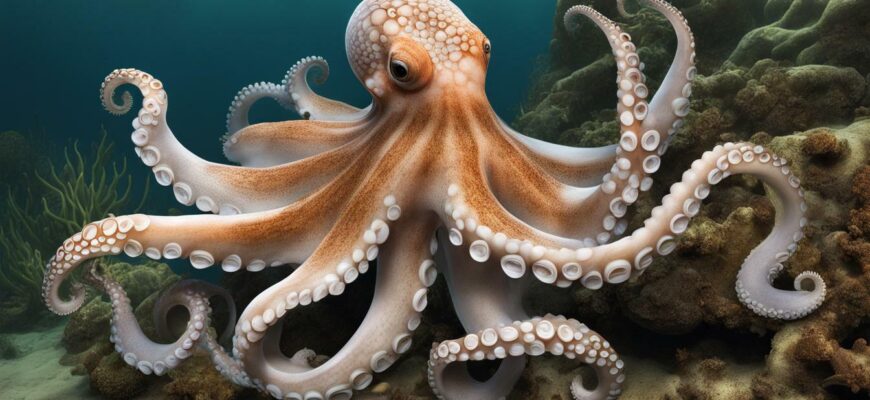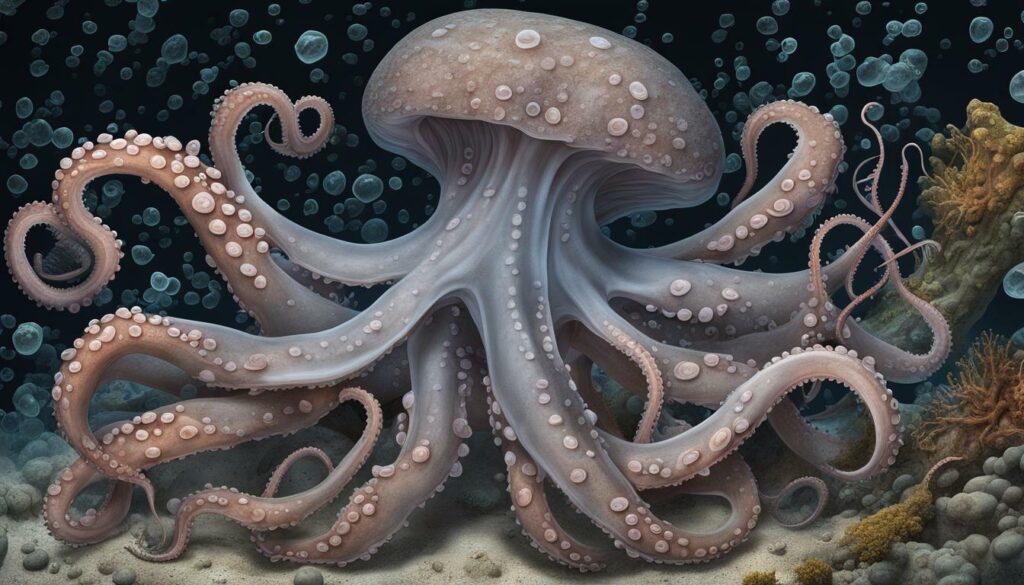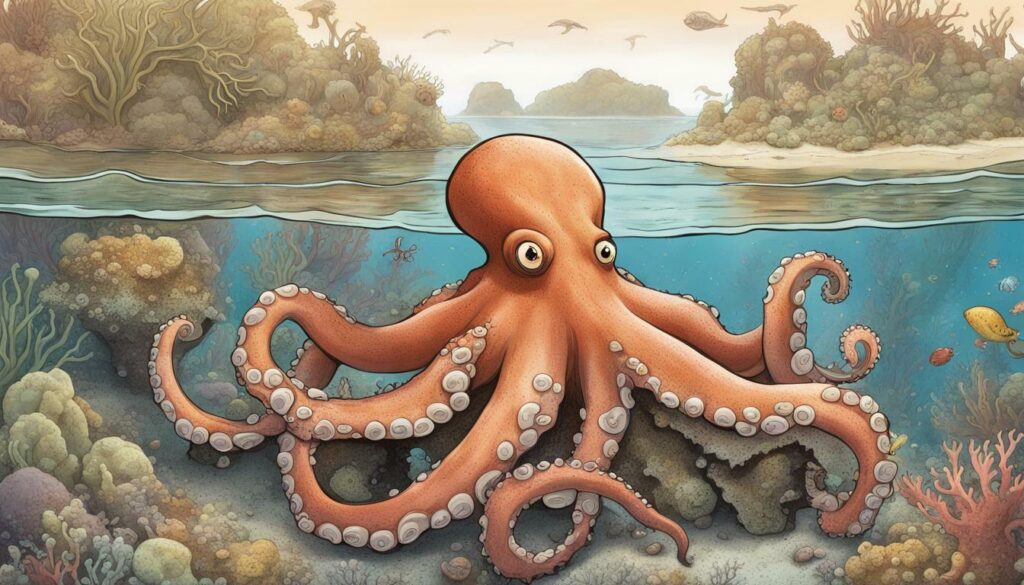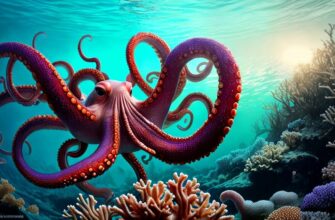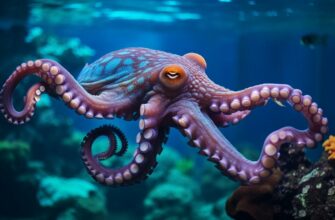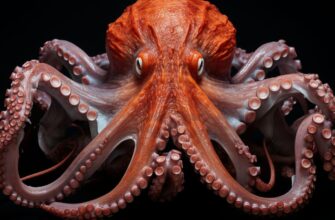Octopuses are fascinating creatures with remarkable abilities. One ability that has captured the attention of scientists and the public alike is their ability to regrow their limbs. Yes, you read that right—octopuses can regrow their limbs!
This ability is not only impressive, but it also has important implications for the fields of biology and medicine. In this article, we’ll explore the regenerative abilities of octopuses and how they are able to regrow their limbs.
- Key Takeaways
- The Regenerative Abilities of Octopuses
- How Do Octopuses Regrow Limbs?
- Cephalopod Limb Regrowth: Insights from Research
- Conclusion
- Implications for Medical Research
- Future Research Directions
- FAQ
- Q: Can octopuses regrow limbs?
- Q: What are the regenerative abilities of octopuses?
- Q: How do octopuses regrow limbs?
- Q: Are there factors that influence octopus limb regrowth?
- Q: What insights does research provide on cephalopod limb regrowth?
Key Takeaways
- Octopuses are capable of regrowing their limbs.
- This ability has important implications for the fields of biology and medicine.
- In this article, we’ll explore the regenerative abilities of octopuses and how they are able to regrow their limbs.
The Regenerative Abilities of Octopuses
Octopuses are known for their incredible ability to regenerate their limbs, a characteristic that has fascinated scientists for decades. Researchers have studied the regenerative properties of octopus limbs in an effort to better understand this remarkable ability and potentially apply it to human medicine.
Studies have shown that octopuses can regenerate not only their limbs but also other body parts such as their eyes and organs. The process of limb regeneration in octopuses is complex and involves various mechanisms that work together to enable the regrowth of the lost limb.
One of the key factors that contribute to the regenerative abilities of octopuses is their unique nervous system. Unlike other animals, the nervous system of an octopus is not centralized, and their arms have a high degree of autonomy and control. This decentralized nervous system allows the tentacles to respond quickly to stimuli and coordinate complex movements.
Another important factor that enables octopuses to regenerate their limbs is their ability to recruit undifferentiated cells to the site of injury. These cells then differentiate into the specific cell types needed to regrow the lost limb. The process of cell differentiation is regulated by various signaling pathways, and researchers are still studying how these pathways are activated in octopuses.
Research into the regenerative abilities of octopuses is ongoing, and scientists hope to gain further insights into the mechanisms that enable limb regeneration in these fascinating creatures. The hope is that this research will one day lead to the development of new therapies for humans suffering from limb loss or other injuries.
How Do Octopuses Regrow Limbs?
Octopuses have the remarkable ability to regrow limbs, even if they have been completely severed. This process is known as autotomy, where the octopus voluntarily detaches its arm in response to a threat or attack. However, regrowing a limb is not an overnight process, and it can take several weeks for the limb to fully regrow.
The regeneration process begins with the formation of a structure known as a blastema at the site of the injury. The blastema is a mass of cells that have the ability to give rise to various cell types and tissues, allowing for the regeneration of the lost limb. Research has shown that certain genes, such as the Wnt and Fgf pathways, play a crucial role in the formation of the blastema and subsequent limb regeneration.
The new limb grows from the tip, with the growth rate varying depending on the species of octopus and environmental factors such as temperature and nutrition. As the limb grows, the octopus will also need to re-establish neural connections to control the movements of the new arm.
Interestingly, octopuses have also been observed using their remaining arms to help speed up the regenerative process. They will groom and clean the wound site, and even use their arms to bring food to the injured area to help provide the necessary nutrients for regrowth.
While the exact mechanisms behind octopus limb regeneration are still not fully understood, ongoing research continues to shed light on this fascinating process. Understanding how octopuses regrow their limbs may also have implications for human regenerative medicine.
“The regeneration process begins with the formation of a structure known as a blastema at the site of the injury.”
Cephalopod Limb Regrowth: Insights from Research
Octopuses are not the only cephalopods that possess the remarkable ability to regrow limbs. Cuttlefish and squid have also been found to exhibit limb regeneration, albeit to a lesser degree than octopuses. However, the mechanisms for limb regrowth in these species are not yet fully understood, and further research is needed to shed light on the processes involved.
One area of investigation is the role of stem cells in cephalopod limb regeneration. A recent study found that cuttlefish possess a population of stem cells in their muscles that could potentially contribute to limb regrowth. However, it is not yet clear whether these stem cells are involved in actual limb regeneration or if they serve a different function in the body.
Another study focused on the regenerative properties of squid fins. The researchers found that certain genes and molecular pathways that are involved in fin regeneration in zebrafish are also active during squid fin regeneration. This suggests that there may be similarities in the regenerative mechanisms of different species, and that studying these processes in one species could provide insights into regenerative abilities in others.
Despite these findings, the regenerative abilities of cephalopods are still not well understood. It is clear, however, that these animals possess a remarkable capacity for healing and regrowth, which could have important implications for fields such as regenerative medicine.
Incredible as it may seem, cephalopods have the ability to regrow lost limbs, including octopuses, squids, and cuttlefish. Although the mechanisms behind their regenerative abilities are still largely unknown, ongoing research is beginning to uncover clues that could lead to a better understanding of these animals’ unique properties.
Conclusion
In conclusion, the ability of octopuses to regrow limbs is truly remarkable. The research on their regenerative abilities has revealed some fascinating insights into the processes involved and the factors influencing their limb regrowth.
Implications for Medical Research
The regenerative properties of octopus limbs hold significant potential for medical research. Experts are studying the mechanisms involved in octopus limb regeneration to develop new treatments for human limb injuries and diseases. This could eventually lead to the development of innovative methods for limb regeneration in humans.
Future Research Directions
There is much more to learn about the regenerative abilities of octopuses and other cephalopods. Future research could focus on understanding the specific signaling pathways involved in limb regrowth and the role of stem cells in the process. Such research could help unlock the full potential of cephalopod limb regrowth for medical and other applications.
Overall, the ability of octopuses to regrow limbs is a fascinating area of study with many potential implications. It highlights the incredible adaptability of these creatures and their unique place in the animal kingdom.
FAQ
Q: Can octopuses regrow limbs?
A: Yes, octopuses have the incredible ability to regrow their limbs.
Q: What are the regenerative abilities of octopuses?
A: Octopuses possess remarkable regenerative abilities, allowing them to regrow lost limbs.
Q: How do octopuses regrow limbs?
A: The process of octopus limb regeneration involves specific mechanisms that enable the regrowth of their limbs.
Q: Are there factors that influence octopus limb regrowth?
A: Yes, various factors can influence the regrowth of octopus limbs, such as the extent of the injury and the overall health of the octopus.
Q: What insights does research provide on cephalopod limb regrowth?
A: Research on cephalopod limb regrowth, including octopuses, offers valuable insights into the regenerative properties of their limbs and helps broaden our understanding of this process.

